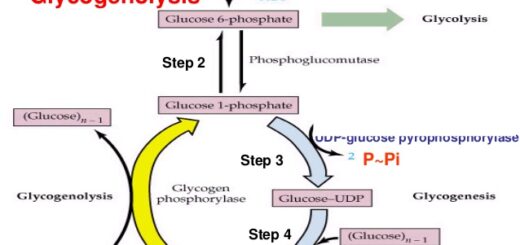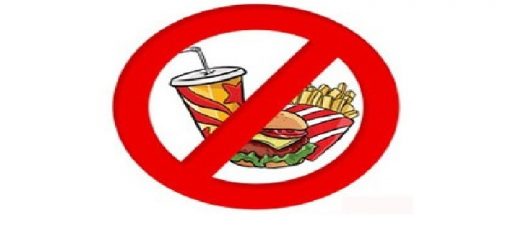Factors that help iron absorption, Daily iron requirements and Abnormal iron levels
In adults, the amount of iron lost from the body is relatively small. Men lose about 0.6 mg/day, largely in the stools. Women have a variable, larger loss averaging twice this value because of additional iron lost in menstruation. The average daily iron intake is about 20 mg, but the amount absorbed is equal only to the losses.
Iron absorption
Almost all iron absorption occurs in the duodenum. Intestinal absorption of iron is regulated by three factors: recent dietary intake of iron, the state of the iron stores in the body, and the state of erythropoiesis in the bone marrow. Organ meats as liver, heart, and kidney and also egg yolk, whole wheat, spinach, and molasses are good sources of iron. and milk is a poor source of iron.
Of the dietary iron, about 10% is absorbed. Most of the iron in the diet is in the ferric (Fe3+) form, but it is the ferrous (Fe2+) form that is absorbed. Gastric secretions dissolve the iron and permit it to form soluble complexes with ascorbic acid that aids its reduction to the Fe2+ form. Therefore iron deficiency anemia is a frequent complication of partial gastrectomy.
Factors that help iron absorption
- Acidity, as the low pH helps to liberate iron from organic combinations.
- Reducing agents, e.g. vitamin C and glutathione change iron from the ferric state (Fe3+) to ferrous state (Fe2+).
- Proteins especially those containing sulfur-containing amino acids also change iron from ferric to ferrous.
- Type of iron compounds in the diet: heme iron is absorbed directly.
- Iron deficiency enhances iron absorption.
Factors which inhibit iron absorption are:
- Achlorhydria or hypochlorhydria.
- Phytates.
- Oxalates.
Mechanism of iron absorption in the duodenum
Transport of Fe2+ into enterocytes occurs via divalent metal transporter 1 (DMT1) in the apical (luminal) side of the cell. Heme is transported to the enterocytes as such by binding to another apical transport protein, heme transporter (HT).
In the enterocyte cytoplasm, heme oxygenase (HO2) removes Fe2+ from the porphyrin of heme and adds it to the intracellular Fe2+ pool. Some Fe2+ is stored in ferritin in the enterocytes, the remainder is transported to plasma by the transporter ferroportin 1 (FP).
Fate of the absorbed iron
Iron released from the mucosal cells enters the portal blood as ferrous (Fe2+) ions. In plasma, Fe2+ is converted to Fe3+ and is bound to the iron transport protein transferrin (TF). The oxidation occurs by serum ferroxidase (ceruloplasmin). The protein-bound iron is 50-150 g/dL, but the total iron-binding capacity (TIBC) is 300 to 360 g/dL. Thus, normally, transferrin is about 35% saturated with iron. Iron is taken rapidly by the bone marrow for hemoglobin synthesis. The remaining iron is stored in the liver as hemosiderin.
Daily iron requirements
- Infants (10-15 mg/day)
- Childeren (15 mg/day)
- Adolescent males 11- 18 years (18 mg/day)
- Adult males (10 mg/day)
- Females up to 50 years (18 mg/day), the increased demands for iron in the females are due to pregnancy, menstruation, and lactation.
- After 50 years, 10 mg/day.
Iron distribution
The total body content of iron is about 5 g. Hemoglobin contains 3 g of the total body iron (60%). 5 % of total iron is held by a porphyrin combined with proteins, e.g. myoglobin, cytochrome oxidases, catalase, and peroxidase. Iron is stored as ferritin Liver is the main organ for the storage of iron. The plasma iron level varies between 50-150 μg/dL.
Iron excretion
Iron is excreted mainly by the faeces either as unabsorbed iron or sloughed intestinal cells.
Functions of iron
Iron is important for compounds essential for cellular respiration as hemoglobin and tissue iron (e.g. myoglobin, cytochromes, cytochrome oxidase, catalase, and peroxidase). The remaining iron is present in stored form as ferritin, transferrin, and hemosiderin and used in hemoglobin biosynthesis.
Abnormal iron levels
Iron deficiency: This condition may be due to diminished intake, diminished absorption, or increased loss of iron. It is characterized by hypochromic microcytic anemia with decreased protein-bound iron and increased total iron-binding capacity. Iron deficiency anemia is common in infancy as milk is deficient in iron.
Iron toxicity (hemosiderosis): Excessive accumulation of iron in tissues, e.g. spleen, heart, liver, pancreas, and under the skin (hemochromatosis) due to repeated blood transfusion in hemolytic anemia. This condition may lead to bronze diabetes. The condition is characterized by decreased total iron-binding capacity.
Anemias causes, symptoms, features, diagnosis & Types of Polycythemia
Blood constituents & Physical properties, Sources & functions of plasma proteins
Red blood cells (Erythrocytes) structure & function, Myeloid tissue & Bone marrow
Erythropoiesis, Hemopoiesis, Hemoglobin & Roles of red cells in oxygen transport
Hemoglobin structure, review & Types of normal hemoglobin
Abnormal types of hemoglobin, Sickling of RBCs, Types & causes of methemoglobinemia
Heme biosynthesis & Disorder, Types of porphyrias, Fate of RBs & Catabolism of Hemoglobin



